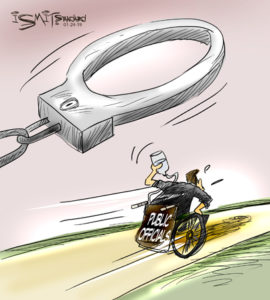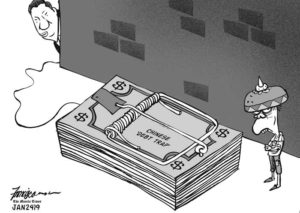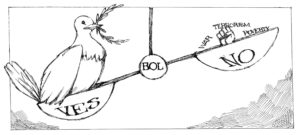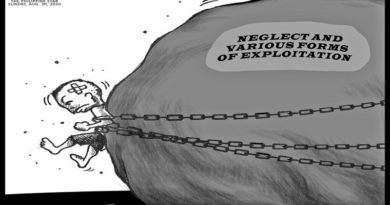OP ED EDITORIAL CARTOONS: … CHINESE ‘DEBT TRAP’

Thanks to a presidential directive for the cleanup of Manila Bay, the Manila Zoo will be shut down indefinitely for what city officials promise to be a dramatic facelift.
The shutdown was announced after untreated sewage from the zoo was found to be polluting an estuary connected to the bay. The zoo, the biggest such facility in the country, has been in operation since 1959, when sewage treatment facilities were not yet a requirement, and has long needed a major cleanup.
Beyond cleaning up, however, the government must consider building a modern facility where people can observe animals in captivity. Around the world, operating zoos has become controversial as animal welfare advocates stress the importance of allowing wildlife to live in their natural habitats. Some animal rights advocates make an exception when endangered wildlife are confined to save the species from disappearing from the planet.
As a compromise, some countries have built zoos that look more like sanctuaries and conservation areas, where wildlife except predators can roam free. Such places cannot match the natural habitat, but the animals can be protected from being hunted down to extinction. In these zoos, visitors watch the animals from the safety of special modes of transportation. Some areas are designated for petting harmless wildlife.
The Manila Zoo is also a park with a lot of trees that help improve air quality in one of the most polluted cities in the country. The park can be retained with wildlife species that don’t need large areas for roaming. For the bigger beasts, city officials can work with animal welfare experts and advocates for a suitable, spacious relocation site. The cleanup of the Manila Zoo should encourage a review of the way our society treats animals.
The Philippine Star
ASEANEWS EDITORIAL CARTOONS:
PHILIPPINE NEWS EDITORIALS:

.
The Manila Times – …. CHINESE ‘DEBT TRAP’


.
The Philippine Star – Beyond the zoo cleanup

Pilipino STAR Ngayon – Kasuhan din ang mga magulang ng 9-anyos

SINGAPORE’S The Straits Times

The Straits Times says
No letting up in war on drugs
Sending drug abusers who confess to consumption offences, and who do not face other criminal charges, to rehabilitation – regardless of how many times they are arrested – might appear to be going soft on drug consumption. After all, taking drugs is consumption, the tough punishment for which has been a cornerstone of Singapore’s war on drugs. Tough measures have also ranged from preventing their use, to say nothing of deterring their trafficking. Hence, previously, hardcore abusers – those caught for the third time or more – would be given sentences of at least five years in jail and three strokes of the cane under the Long-Term (LT) Imprisonment scheme that was introduced here in 1998. Now, following amendments to the Misuse of Drugs Act, a distinction will be drawn between “pure” abusers who only consume drugs and those who face charges over other offences.
However, the change does not dilute the direction of the anti-drug war although it redraws the route to the destination. The retributive purpose of any law short of the death penalty – be that a law against drugs or any other crime – must be balanced by its rehabilitative potential. Long detention periods affect abusers’ ability to reintegrate themselves into society, with the five-year recidivism rates for LT inmates remaining very high at 60 per cent. Sadly, such former abusers are also less able to hold down a job after a long period in jail and often become estranged from their families and communities.
TO READ THE FULL ARTICLE:
https://www.straitstimes.com/opinion/st-editorial/no-letting-up-in-war-on-drugs
.
THAILAND’S Bangkok Post – OPINION
Fair poll goal within reach


ADS by Cloud 9:
.
– SPACE RESERVE FOR YOUR ADVERTISEMENT –
.
.
 All photographs, news, editorials, opinions, information, data, others have been taken from the Internet ..aseanews.net | [email protected] |.For comments, Email to :D’Equalizer | [email protected] | Contributor
All photographs, news, editorials, opinions, information, data, others have been taken from the Internet ..aseanews.net | [email protected] |.For comments, Email to :D’Equalizer | [email protected] | Contributor










